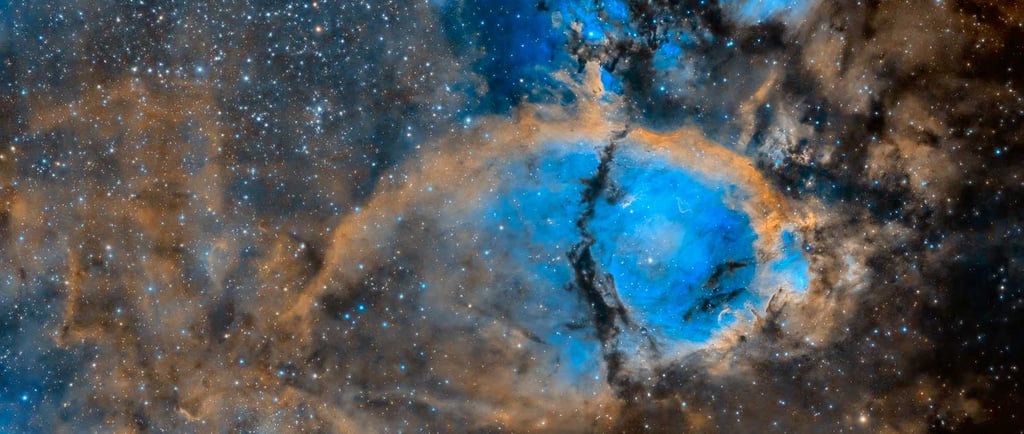The Fish Head Nebula


Introduction to the Fish Head Nebula
The Fish Head Nebula, also known as LBN 762, is an intriguing celestial formation that lies in the constellation Cassiopeia. It is part of a larger star-forming system composed of gas and dust, situated approximately 6,000 light-years from Earth. This nebula has garnered the interest of astronomers and space enthusiasts alike due to its striking resemblance to a fish's head, showcasing the captivating artistry of the universe.
Location and Composition
The Fish Head Nebula is located in the Perseus spiral arm of the Milky Way galaxy, a region rich in stellar activity and cosmic phenomena. As a star-forming region, this nebula serves as a cradle for new stars, with gases and dust coalescing to ignite the birth of luminous celestial bodies. The nebula's gaseous composition primarily consists of hydrogen, alongside traces of other elements, which contribute to the formation of stars and the vibrant colors visible in astronomical images.
The Significance of the Fish Head Nebula
Studying the Fish Head Nebula is crucial for understanding the processes of star formation and the evolution of galaxies. This nebula offers scientists valuable insights into the dynamics of gas and dust in such regions, and how they come together to form new stars. By observing the nebula through various wavelengths of light, including radio and infrared, astronomers can uncover hidden structures and gain a more comprehensive understanding of the nebula's composition and star formation history.
Furthermore, the Fish Head Nebula is a testament to the vastness and complexity of our universe. It serves as a reminder of the stunning phenomena occurring beyond our planet, inviting continued exploration and research into the nature of star formation. As advancements in technology enhance our observational capabilities, the mysteries of the Fish Head Nebula may be gradually unveiled, revealing even greater wonders.
In conclusion, the Fish Head Nebula represents a fascinating aspect of astrophysics, being both visually stunning and scientifically significant. Its location in the Perseus spiral arm of the Milky Way and its distance of 6,000 light-years from Earth provide a unique perspective on the universe's star-forming processes. As we advance our understanding of such celestial formations, the allure of the Fish Head Nebula will undoubtedly inspire future generations of astronomers and stargazers alike.
